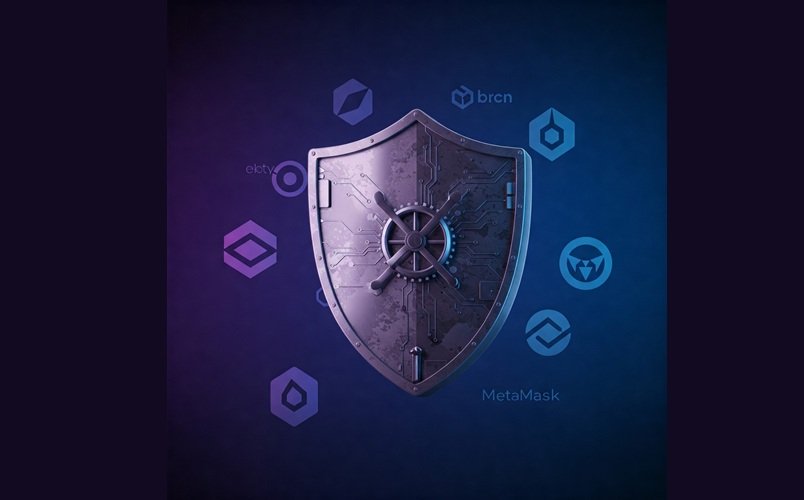
Introduction
In the last decade, blockchain technology and cryptocurrency have emerged as two of the most transformative innovations in the digital era. They are redefining how we store data, exchange value, and establish trust—without relying on centralized institutions. From the creation of Bitcoin to the rise of decentralized finance (DeFi) and Web3, the synergy between blockchain and crypto is ushering in a new era of digital empowerment.
What is Blockchain?
At its core, blockchain is a distributed, decentralized digital ledger that records transactions across multiple computers. These records, called “blocks,” are linked together chronologically to form a “chain.” Once a block is added, its data is immutable—meaning it cannot be altered retroactively without changing all subsequent blocks, which requires consensus from the entire network.
Key Features of Blockchain:
- Decentralization: No single authority controls the system.
- Transparency: All participants can view the transaction history.
- Security: Cryptographic techniques ensure data integrity.
- Immutability: Once recorded, data cannot be tampered with.
- Consensus Mechanisms: Like Proof of Work (PoW) and Proof of Stake (PoS) ensure agreement among nodes.
What is Cryptocurrency?
A cryptocurrency is a type of digital or virtual currency that uses cryptography for secure transactions and operates independently of a central bank. It is built and powered by blockchain technology.
The first and most well-known cryptocurrency, Bitcoin, was created in 2009 by an anonymous figure known as Satoshi Nakamoto. It aimed to provide a peer-to-peer electronic cash system without the need for intermediaries.
Popular Cryptocurrencies (as of 2025):
- Bitcoin (BTC) – Digital gold; store of value.
- Ethereum (ETH) – Smart contract platform.
- Solana (SOL) – High-speed dApp ecosystem.
- Monero (XMR) – Privacy-focused transactions.
- Chainlink (LINK) – Decentralized oracles for real-world data.
How Blockchain and Crypto Work Together
Cryptocurrencies are the native assets of blockchain networks. Each transaction involving cryptocurrency is recorded on a blockchain, ensuring transparency, security, and traceability.
Example Workflow:
- User A sends Bitcoin to User B
- Transaction request is broadcast to the Bitcoin network.
- Miners validate the transaction using Proof of Work.
- Once confirmed, the transaction is added to the blockchain.
- User B receives Bitcoin—verifiable by anyone on the blockchain.
Use Cases of Blockchain and Crypto
The applications go far beyond digital money:
1. Decentralized Finance (DeFi)
Eliminates intermediaries like banks and brokers. Users can lend, borrow, stake, and trade assets on protocols like Aave, Uniswap, and Compound.
2. Non-Fungible Tokens (NFTs)
Enable digital ownership of art, music, collectibles, and more—each represented by a unique token on a blockchain.
3. Supply Chain Management
Blockchain ensures traceability and transparency in logistics—from farm to table or factory to customer.
4. Healthcare
Immutable patient records and drug traceability can reduce fraud and enhance care.
5. Voting Systems
Blockchain-based voting can eliminate tampering and ensure transparent elections.
Advantages of Blockchain and Cryptocurrency
- Trustless System: No need to trust intermediaries.
- Global Accessibility: Anyone with internet can participate.
- Lower Transaction Fees: Especially for cross-border payments.
- Fast Settlement: Transactions are often near-instant.
- Ownership and Control: Users have control over their private keys and funds.
Challenges and Risks
While the technology is promising, it also comes with its share of risks:
- Volatility: Crypto markets are extremely volatile.
- Scalability: Blockchains like Bitcoin and Ethereum face congestion issues.
- Regulation: Lack of global consensus on crypto regulation.
- Security: Hacks, phishing, and scams remain prevalent.
📈 The Future of Blockchain and Crypto
1. Mass Adoption
We’re seeing increasing acceptance of crypto by mainstream institutions, governments, and retailers.
2. Central Bank Digital Currencies (CBDCs)
Governments are developing their own blockchain-based fiat currencies.
3. Web3 Ecosystem
Blockchain is becoming the backbone of Web3—an internet where users control their data and identity.
4. Interoperability
Projects like Polkadot and Cosmos aim to connect different blockchains into a unified ecosystem.
5. Green Blockchain
Shift from energy-intensive models like PoW to eco-friendly consensus models like PoS (e.g., Ethereum 2.0).
🧠 Final Thoughts
Blockchain and cryptocurrency are more than technological trends—they represent a fundamental paradigm shift in how we interact with digital systems, establish trust, and exchange value.
As innovation continues, it’s crucial for users to stay informed, skeptical of hype, and always prioritize security and self-custody.
“In a decentralized world, knowledge is power, and ownership is freedom.”





